Iraivan’s Bronze Panels
Bronze panels have been a vision in the making for years, mostly hidden from curious TAKA eyes. We did see Holly Young at work on the bas-relief sculptures during the last year or two, but then it all disappeared into the metal workshops in Loveland, Colorado. Recently we reported on the arrival of two crates holding 20 of the finished works of art.
They are now being installed on the perimeter wall, 35 of them in all, measuring 14" by 47." Gurudeva envisioned them as a library in bronze, just as the granite pillars were called by him "A library in stone." The panels contain the basic information a future pilgrim (or team of archeologists) would like to know: the history of the temple, from vision to chisel; the founder and architect; the simple technology used; the story of Mahalingesvara, the holy swayambhu spatika lingam; the monastery and its Satguru and monks; the philosophy of Saiva Siddhanta represented by the temple; the scriptures and beliefs in multiple languages, and more.
It is immensely rewarding after so much effort to see the panels in place, adding another layer of grace and meaningfulness to Iraivan's already infinite goodness. There are more panels to be installed in the days ahead as an unusually competent team drills and installs the bronzes. Today's slideshow shows the process in detail. Jai Gurudeva!
Yoginathaswami and Yogi Dayanatha Final Trip Photos
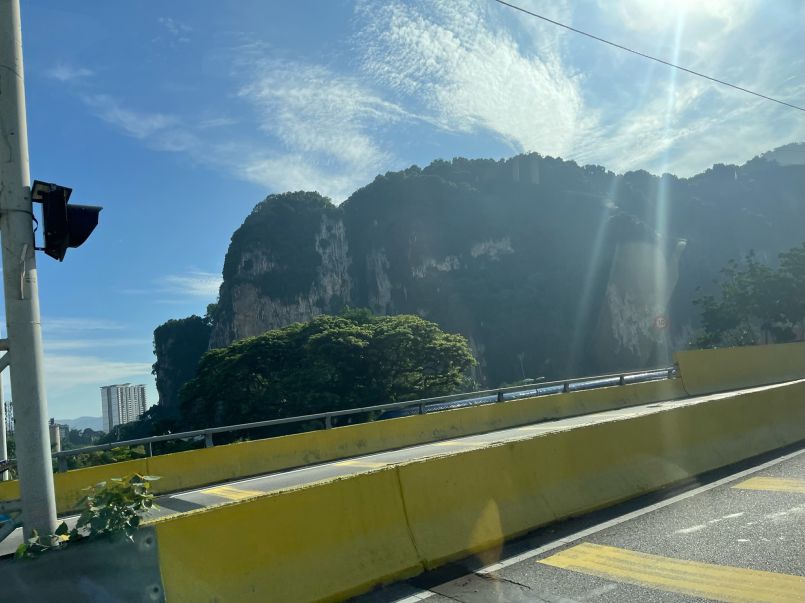
Yoginathaswami and Yogi Dayanatha in India, Part Five
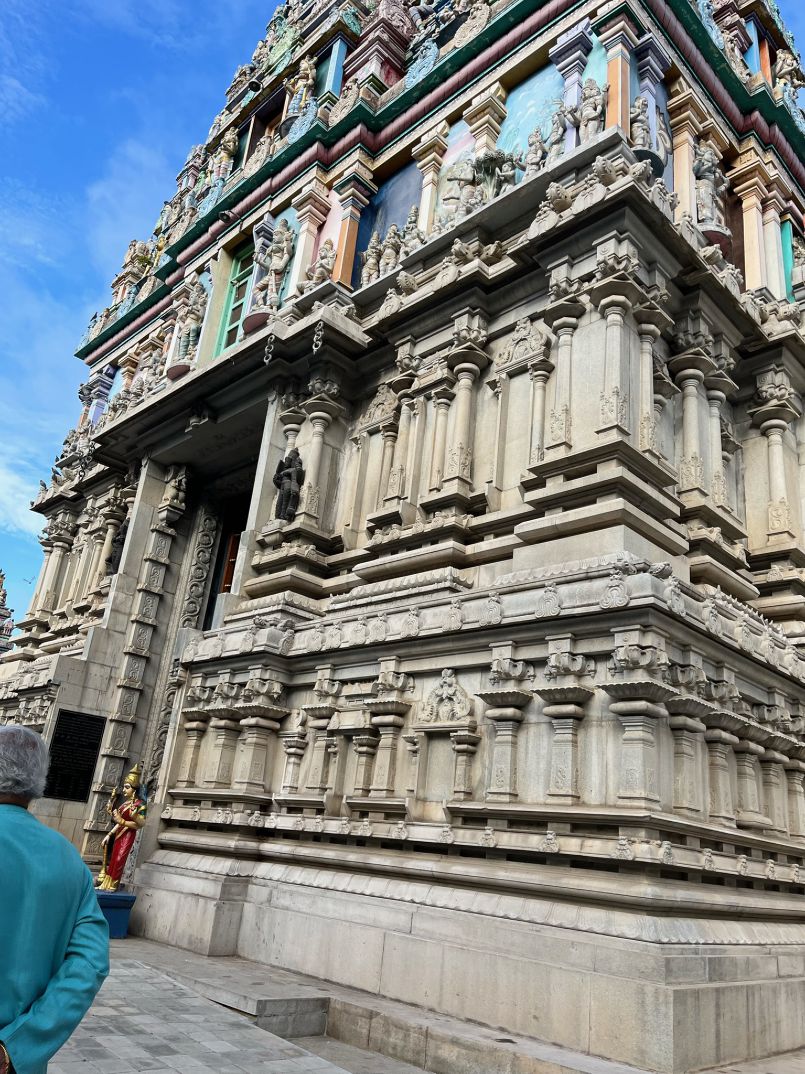
The next stop in Bengaluru was Kailash Ashram, home of the late Sivaratnapuriswami (Trichyswamigal) and now headed by his successor, Sri la Sri Jayendrapuriswamigal. This ashram was largely responsible for clearing the path to set up the Iraivan Temple carving site in Bengaluru. Our late Gurudeva and architect Ganapati Sthapati ceremoniously chipped the first Iraivan Temple stone there in 1990.
Yogi Dayanatha reports--
"Jayendrapuriswami brought us around the property. He brought us to the Pyramid of Health which will be fully functioning in two months. They have dental already going on. The free clinic is happening, yoga sessions and meditation sessions are already happening. Eye care and some Ayurvedic treatment is underway.
"Then he brought us to see another building housing a homeopathic clinic, with most facilities already running. Two to three hundred people are already going to this place. Then he brought us to the gardens which had big coconut tree groove, mango trees, curry leaves and Naga lingam poo trees. We had some fresh cut coconut to drink and we walked across the road to go to another piece of land that had tons of eggplant, okra, chili peppers, pumpkins and more. It was really beautiful to look at. After lunch he took us to the gaushala where he showed how they use the cow dung to make methane gas for cooking. It was very fascinating. Its doing so well they are actually selling it."
After a short stop at Master Course trilogy student Madan Ganesh's family home, the team visited a granite temple being carved and assembled by Senthil and Thurai Rajasankara's company for the Sri Adichunchanagiri Mutt branch in Bengaluru. The former head of the Mutt, the late Sri la Sri Balagangadharanathaswami, had temporarily donated land in the city for the Iraivan Temple carving worksite.
Afterwards, they visited the Rajasankara joint family home and company carving site.
Finally, they visited a company called Live Green which is developing plant-only additive products to replace all animal-derived additives used in various food products.
And so ends the India portion of their trip
Yoginathaswami and Yogi Dayanatha in India, Part Four
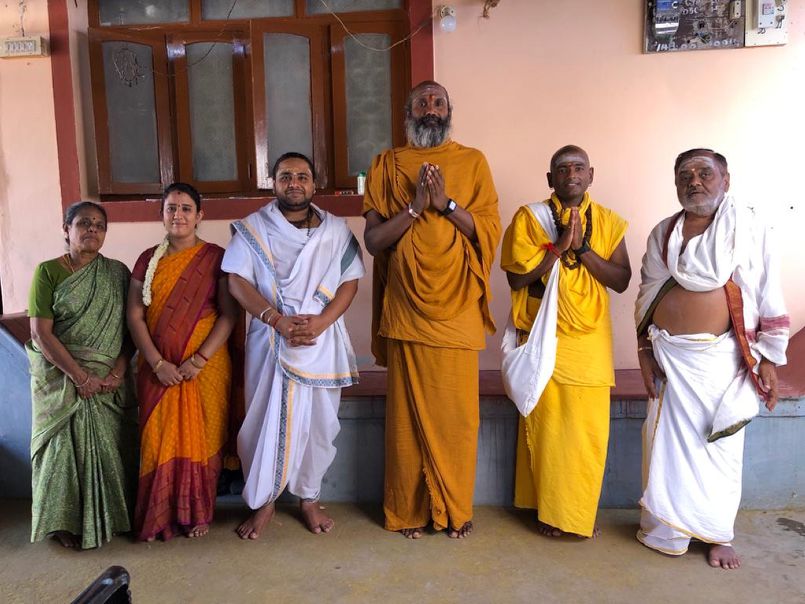
One of the priests who performed the Iraivan Temple pranapratishtha in March is Vivek Sivam, who then stayed on to perform the 41 days of Mandala Pujas afterwards. Now our monks have visited him at his family temple in Coimbatore, called Kurunthamalai Kulandhai Velaayuthaswami. It's on top of a small hill. Yogi Dayanatha reported:
"It has a similar feeling to Iraivan Temple, green all around and very quiet (when there is no construction). Lots of monkeys running around that temple. They were very playful but didn't bother us much. Coimbatore was cooler than other areas and it was very windy. They just had their kumbhabhishekam and are doing their mandala puja. We sat for the puja and chanted Sri Rudram with Vivek. Muruga had a beautiful Alankaram. After the puja Vivek took us to his house. We met his parents and his wife. They fed us breakfast. First home cooked meal since we started our India trip. They were so happy that we came. They made lunch for us as well to take on the road."
Then, on the seven-hour ride to Bengaluru, our travelers passed through the very scenic region of Ooty including a tiger reserve. Yogi Dayanatha reported: "You can see wild elephants, deers, peacocks and other animals except for tigers, as they only come out during the night most of the time. It was quite a drive through the reserve and the forests. Tons of pines, teak, blue gum and other trees. Ooty was very cool. You open the window, its like someone forgot to turn the A/C off."
Arriving in Bengaluru, the first stop was to visit the Sri Sri Ravi Shankar (Art of Living Foundation) Veda-Agama Pathashala where Sundaramoorthy Sivacharya is the principal. He was one of the head priests at our Iraivan Temple pranapratishtha. Yogi Dayanatha reported:
"It was quite a welcoming party. We had small group of padashala boys chanting, short puja for Ganesha and then we entered the padashala. There, the boys were sitting chanting the "vyoma vyapine..." abhishekam mantra beautifully. We met Shanmuga Sivachariya's son. After that Sudaramoorthy Sivachariya give a short speech and honored Swami. Then different classes of boys were chanting different mantras. From the seniors to juniors.
"After that they took us on a tour around the property, their gaushala, research rooms, class rooms and farms—which had tons of okra and pumpkins. They have lots of people walking around, and many of seminars taking place."
Homa at Iraivan
Bodhinatha has decreed that each month a homa will be held at Iraivan Temple, something that makes our priest, Pravinkumar, really happy. Yesterday the second one was held. Auspiciously, the Women's Retreat is underway and they were able to also attend.
A few words about Krittika:
Krittika nakshatra, also known as the "Star of Fire," is the third lunar mansion in Vedic astrology. It is represented by a group of seven stars known as the Pleiades. It spans across the zodiac sign of Aries and a part of Taurus. Symbolized by a razor or a flame, Krittika is associated with determination, courage, and transformation.
Krittika nakshatra is ruled by the Sun and is considered auspicious for activities like initiation, starting new ventures, and personal growth. Lord Siva is sometimes known as "Krittivasan," which means "the one who resides in Krittika." This name signifies His connection to the Krittika nakshatra.
Yoginathaswami and Yogi Dayanatha in India, Part Three
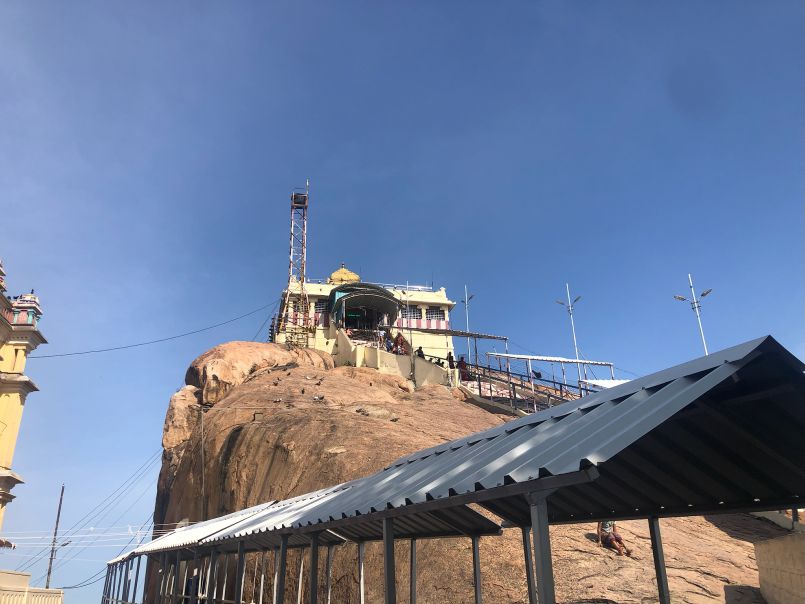
On this India pilgrimage the monks are being guided through the locations by our sishyas Thuraisingam and his wife Swapna.
After Tiruvanaikovil Jambukeswarar, our monks visited the Uchi Pillaiyar temple, a great walk up steep stairs. Beforehand, at the base, they visited Thayumanavar Temple which has a massive Sivalingam. The bottom part of the Sivalingam is enclosed by four walls which you can walk around.
Afterwards they drove to Pillaiyarpatti Ganesha Temple which is also home to Pitchai Gurukkal and his priest training school. Our current Iraivan Temple priest, Pravin Kumar, was trained there. It was a happy meeting with Pitchai Gurukkal just before he was leaving for Chennai and then to Canada (he travels often to officiate at temple kumbhabhishekams). He gave them a room to rest and also see other visitors.
Later on the way to Madurai, they visited Thirumarainathar Temple which is in the birthplace town of Manickavasagar. It is a very quiet place.
At the Madurai Meenakshi/Sundareswara temple, no phones, electronics, smart watches etc were allowed inside the temple due to bomb threat. They were shown around by Chellappa Baktar who was one of the priests at our Iraivan Temple crystal Sivalinga installation. They visited his home and presented a certificate for having officiated at our Iraivan Temple ceremonies.
After Madurai they drove to Maruthamalai Murugan Temple on a hilltop. It was crowded and they could only see Murugan from a distance. Yogi Dayanatha said He was covered with vibhuti and looked like a king. Afterwards they visited the beautiful Perur Pateeswarar Temple.
Yoginathaswami and Yogi Dayanatha in India, Part Two
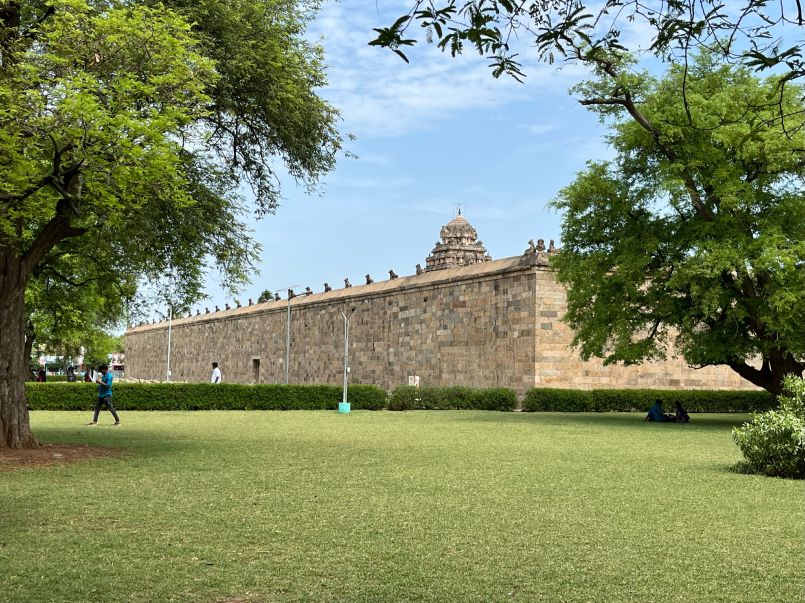
Arriving in Kumbhakonam, they first visited Dharasuram Airavatesvara Temple, another ancient Chola Siva temple. It feels like a tourist attraction at the moment.
Next they met with Muruga Sthapati to plan for making a swarnabandanam, gold band, to be placed around the base of the Iraivan Temple Mahalingeswara crystal Sivalinga as the focal point of the public Kumbhabhishekam in several years.
After that meeting, they drove an hour to visit the Chola Thanjavur Brihadeeswara Temple, famous for the really tall vimanam/capstone and huge Sivalinga.
Next on the itinerary was to visit the water element Siva temple, Tiruvanaikovil Jambukeswarar temple in Trichy. It has amazing carvings, huge pillars and constant water flow in front of the Sivalinga that no one can explain.
Mahalingeshvara
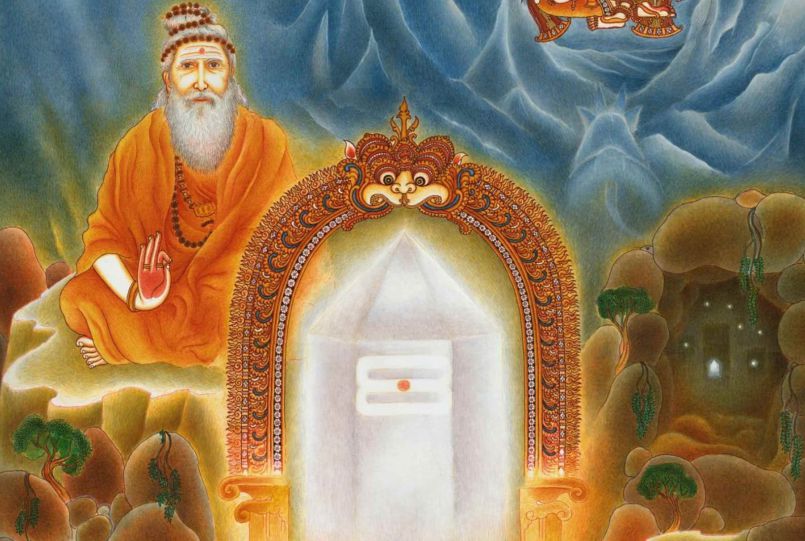
This is the story of the remarkable crystal Sivalingam now fully present and aware in Iraivan Temple's sanctum and receiving daily worship. Today's is a long story with lots of details, but you will get the jist of it by reading the first few paragraphs. The longer story dives into the finding of this gem, as told in The Guru Chronicles.
To begin, each time we get an email from the Adisaiva Sivacharya who was head priest for our Big Event in March, he adds more to the name of the lingam. His latest full name is Maha Spatikakruthi Jyothiswarupa Sri Mahalingeshwara Swami at Iraivan Kovil, which roughly translates to "The great, radiant and crystal-like form of God Siva, also known as Sri Mahalingeshwara Swami."
Here is the tale worth tellilng again:
In the spring of 1987 Gurudeva's vision for Iraivan Temple was evolving from a mystical revelation to a real-world plan. Working with sacred architects in South India, he was de ning its physical form, establishing the principles of its creation and considering the style of the massive stone edices built during South India's Chola Dynasty a millennium ago. The big question was still pending: What form of Siva would inhabit the inner sanctum? It was a meditation that continued for months, for he knew the relevance of this decision. It would dene the temple more than any external style. It would be its life and essence, the most holy and powerful force around which all else would circle.
A Clear Crystal Vision
One day, in an early-morning vision in his private quarters, Gurudeva saw the future, as he would later say. In fact, he often said, if you want to know what you should do, do this: In your mind, travel into the future, and from there look back and witness what happened. The present-day decision will be obvious.
In this vision of the yet-to-be, Gurudeva saw a massive crystal Sivalingam shining brightly in the sanctum of Iraivan Temple, radiating out to the world. It was a titan among crystals. In fact, it seemed in this rst seeing impossibly large, fantastical and beyond reality. Perhaps, he thought, it is merely the spiritual form of the Sivalingam and not the physical one.
Downstairs a few hours later, he shared this vision with the monks, letting them know he had his answer as to which form of Siva that Iraivan Temple would embody. It would be a crystal Lingam, known in Sanskrit as sphatika Sivalingam. In the ancient texts it is said that a Lingam, which is the aniconic form of the Creator-Preserver-Destroyer of the universe, is the highest of worshipful icons. It represents That which is beyond representation, beyond form and even imagination. It is the All in all, the Self beyond time, form, space and cause.
The Agamas say one can worship this Great God Siva in the form of a Lingam made of mud or sand, of cow dung or wood, of bronze or black granite stone. But the purest and most sought-after form is the quartz crystal, a natural stone not carved by man but made by nature, gathered molecule by molecule over hundreds, thousands or millions of years, grown as a living body grows, but in nitely more slowly. Such a creation of nature is itself a miracle worthy of worship.
The monks were delighted to hear of their guru's revelation and imag-ined the meanings behind it. Kadavul Temple already housed God Siva as Nataraja, the divine dancer who creates and inhabits every atom of the cosmos, and Iraivan Temple would host Siva as the transcendent Beyond, immanent and transcendent, form and formless. It was perfect. But the monks were not at all prepared for what would happen next.
Gurudeva paid a visit the next day to the Crystal Journey shop at Kilohana on Kauai. He was there looking at the wares, asking the proprietor about crystals, looking for a large one he had visualized. She did not have such a crystal, but eagerly shared her own similar vision of a giant crystal.
Some weeks later, she called requesting to meet with Gurudeva, arriving at the monastery mid morning. She was a kind of mythical character, a child of the 70s, a cherubic, intelligent lady about 40 years old. In her long dress, looking a bit Roma, her round cheeks pink with the pleasure of her visit, she shared that she had an important message for him. She was taken to Gurudeva's ofce, where he listened to her tale. "Gurudeva, I had a dream last night. In my dream I saw, even more clearly than before, a giant crystal. Very tall and perfectly formed, just like the one you described. Not only that, I saw where it is. If you will allow me, I want to go there. I want to nd the crystal and bring it to you. Will you buy me a ticket?"
Never in his life had Gurudeva bought a ticket for a near stranger on a dream-induced mission. But this was different. Gurudeva then told the visitor of his own dream that same morning, of how he had seen the giant crystal, too, but never imagined someone else might have the same dream at nearly the same time. He took it as a sign, and did the unthinkable--bought her a round-trip ticket to Arkansas, the Natural State.
Soon she was on a crystal quest. Having never visited Arkansas, she took the logical course and began visiting the various mines in the area. Along with Brazil, Arkansas is the world's most productive crystal source, and there were dozens of mines to be tracked down at the end of long, unpaved roads.
Ultimately she found the crystal at the mines of one James Coleman, a hard-scrabble man dressed in denim with a scrappy beard and callused hands, whose father and grandfather had mined crystals and who knew the business like none other.
Ambling to his Jeep, the taciturn miner motioned to her to get in. Off the two drove, about a mile on a pitted coral path some called a road that ended at an old wooden warehouse. Getting down, Coleman walked through the double doors and headed to the back of the open space, stop-ping at a pallet in a dark corner. On it was a musty mattress, worn and worthless, rolled in a circle and tied with a hemp rope.
Without so much as a word, Coleman cut the rope with a pocket knife and threw open the mattress. There lay the huge, milky white, quartz crystal. It was a marvel to behold, a perfect thing that could be an artifact in a museum of art or a masterpiece in the foyer of a billionaire's mansion. But it was here, not far from nowhere.
His customary reticence overcome by the urgent need to relate his story, Coleman turned to the woman, who stood speechless, with happy tears washing down her cheeks. He said: In 1975 my brother and I were digging for crystals. Below these hills there are honeycombs of caves where our rocks are harvested. We were 65 feet under that day, when we found our way into a new cave. Nothing unusual about it at rst; it was some twenty feet across and ve feet high, all dark and dank. But then our light fell on this crystal. It had fallen and lay on its side, broken away from the cave oor. Around it on three sides was a colony of smaller crystals, ten or so, which were all still intact and growing. This one had stopped growing, of course. As you can see, it has six sides and is perfectly pointed, and its surface feels like cool ice, day and night. We went up to get the mattress and wrapped the crystal in it, dragging it inch by inch to the surface. Took all day.
"It was, to both of us, an amazing discovery. Though our family has been mining crystals for three generations, no one ever heard of such a gem. My brother and I knew it was one of a kind, and we both sensed it had a destiny, though we didn't know what that might be. Something extraordinary. We kept it in the mattress and brought it here, out of sight, vowing not to tell a soul about it. But somehow you saw it. How else would you know? We gured that one day we would learn what the crystal was meant for. I think it was meant to go with you, to Hawaii, and to be with that holy man who saw it. The crystal has been waiting, and I'm glad you came to get it."
The crystal seeker was exultant. She called Gurudeva, who asked for photos to be sent. When he saw them, he said, "Yes, that's it!" She arranged for the purchase and packing of the crystal, then ew home. The 700-pound, 39-inch-tall sphatika Sivalingam arrived at the monastery on August 14 and was formally installed in front of Lord Kadavul Nataraja two days later, awaiting the day Iraivan Temple would be completed. Gurudeva's morning vision had manifested in a magical way.
One afternoon years later, a deva with whom Gurudeva often communicated signalled that he was present and asked if there were any questions. The monk with him asked about the signicance of the huge crystal. With the same ease that ordinary people listen to a friend speak, Gurudeva clairaudiently heard the inner-plane deva's answer and dictated it, in two- and three-word volleys, to his amanuensis of the day. His message: "Now, the large crystal we have is very special, having been especially prepared for its mission as a relay station for peace on Earth, harmony, contentment, healing and patience, freedom and goodwill and close cooperation among the life forms and humans beings on this planet. It is at this very moment relaying trillions of messages through every crystal on this planet, energizing and educating even the smallest insect." Aum Namasivaya!
Pool Renovation Begins in Earnest
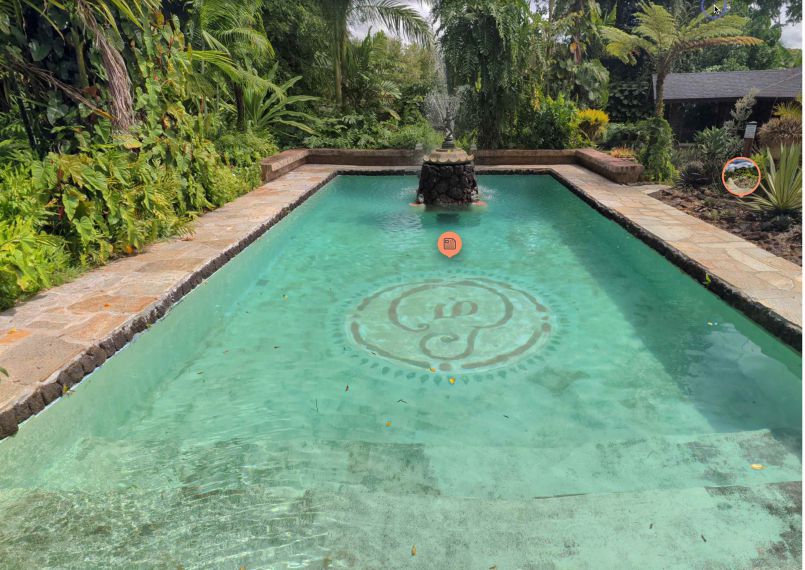
Before we begin the pool report, a sharing. When Shanmukha Sivacharyar was here in March left a bit of wisdom for all to ponder. He told all gathered for the Big Event:
When turbulence is experienced in our life (health, loss, career changes, karmic challenges, relationships), buckle up. Just pretend you are on a plane that has hit a some rough weather. What do you do? Reach for the seatbelt and buckle up. Then sit back, stay calm and let the pilot, who is Siva, do his duty.
A new project has begun, the renovation of the Kadavul Temple Tank. It is long overdue, and will bring new beauty and color for pilgrims to enjoy. The tank has been drained and now the old surface paint is being removed. Plumbing is being rerouted and improved to make maintenance work easier for the monks.
The pool with then be covered with deep blue, one-inch square tiles. The Tamil Aum, which has faded over the years, will now be remade in tile, never to fade again! The project will take 6-8 weeks.
When asked to explain the purpose of the Hindu temple tank, ChatGPT said: "The temple tank in a Hindu temple serves as a sacred water reservoir, symbolizing purity and spiritual cleansing. Here devotees perform ritualistic ablutions before entering, offering prayers and seeking blessings. It also facilitates religious ceremonies and plays a vital role in fostering a serene and divine atmosphere within the temple complex."
Jai to Siva’s Men, the Adisaiva Priests
This is Day 3 of the New Mahalingesvara Era. Everything is changed, only the Self beyond the Beyond remains unchanged, it seems. We wish to honor the Sivacharyars who performed their magic to install Mahalingesvara at Iraivan Temple. We asked Vivek Sivacharyar how many mantras he intoned during the 45 days of Mandala Puja and he said, "One lak, 20 thousand." That's 120,000 mantras. He added that that meny again were intoned by the Sivacharyars in March and again in May! The monks press their palms together to honor this noble clan.
From Our Gurus' Teachings
Archives are now available through 2001. Light colored days have no posts. 1998-2001 coming later.
